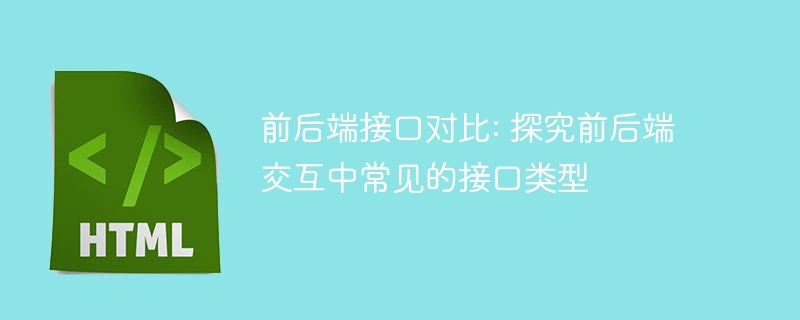

Comparison of front-end and back-end interfaces: To explore common interface types in front-end and back-end interactions, specific code examples are required
1. Introduction
With the rapid development of the Internet, The development model that separates the front and back ends has gradually become mainstream. In this pattern, front-end developers and back-end developers implement data interaction and communication through interfaces. Therefore, understanding the different interface types and their characteristics is crucial to achieve efficient front-end and back-end interaction. This article will explore common interface types in front-end and back-end interactions and provide specific code examples.
2. Common front-end and back-end interface types
Front-end code example (using the jQuery library to send a GET request):
$.ajax({
url: '/api/users',
type: 'GET',
dataType: 'json',
success: function(data) {
// 处理返回的数据
}
});Back-end code example (using Node.js and the Express framework to handle GET requests):
app.get('/api/users', function(req, res) {
// 处理请求,返回数据
});Front-end code example (using Apollo Client to send GraphQL queries):
import { gql } from 'apollo-boost';
import { useQuery } from '@apollo/react-hooks';
const GET_USERS = gql`
query {
users {
id
name
age
}
}
`;
function MyComponent() {
const { loading, error, data } = useQuery(GET_USERS);
if (loading) return <p>Loading...</p>;
if (error) return <p>Error :(</p>;
// 处理返回的数据
return (
<ul>
{data.users.map(user => (
<li key={user.id}>{user.name}</li>
))}
</ul>
);
}Back-end code example (using Node.js and the GraphQL Yoga framework to handle requests):
const resolvers = {
Query: {
users: () => {
// 查询数据,返回用户列表
}
}
};
const server = new GraphQLServer({ typeDefs, resolvers });
server.start(() => console.log('Server is running on http://localhost:4000'));3. Summary
Through comparison, we can see that RESTful API and GraphQL API play an important role in front-end and back-end interaction. RESTful API uses standard HTTP methods and URLs for resource operations, which is relatively simple and intuitive; while GraphQL API provides more powerful and flexible query capabilities and can obtain data on demand.
According to the different project requirements and team technology stack, you can choose the appropriate interface type to achieve efficient front-end and back-end interaction. No matter which interface type is chosen, proper design and use of interfaces can improve development efficiency and reduce communication costs. I hope this article can provide some reference for developers to choose appropriate interface types in front-end and back-end interactions, so as to achieve a better development experience and user experience.
The above is the detailed content of Compare front-end and back-end interfaces: Study common front-end and back-end interactive interface types. For more information, please follow other related articles on the PHP Chinese website!




